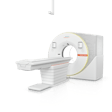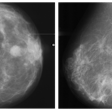MRI shows that lower pulmonary gas exchange in the lungs of long-COVID patients may be associated with cognitive symptoms, according to a study to be presented at the RSNA annual meeting in Chicago.
The findings suggest that gas exchange abnormalities can help identify long-COVID patients who require additional treatment or long-term management, noted the study's lead author Keegan Staab, a radiology research assistant at the University of Iowa in Iowa City.
“This is the first time that MRI has been used to jointly assess lung and brain function to investigate their relationship in long COVID," Staab said, in an RSNA statement.
About 17% of adults in the U.S. have experienced a post-COVID condition commonly referred to as long COVID, according to estimates. Difficulty concentrating ("brain fog"), changes in sense of smell or taste, fatigue, joint or muscle pain, and dyspnea (shortness of breath) are among the symptoms, which can persist for weeks, months, or even years.
In pulmonary gas exchange, oxygen moves from the lungs to the bloodstream, while carbon dioxide moves from the bloodstream to the lungs. In the study, Staab and colleagues used an advanced technique that uses xenon-129 (Xe-129) gas with MRI to measure this gas exchange.
They recruited 10 women (median age: 52 years old) who had persistent dyspnea and/or fatigue following on average 31 months after acute COVID-19 infection. Participants underwent hyperpolarized Xe-129 pulmonary MRI, structural and functional brain MRI, pulmonary function tests, and cognitive tests.
Perceived cognitive difficulties were measured using Patient-Reported Outcomes Measurement Information System, and objective cognitive performance was assessed using the National Institutes of Health Toolbox V3 Cognition Battery, the researchers noted.
 Individuals in the study were plotted with the x-axis being rank of pulmonary gas exchange. The black dots show the pulmonary gas exchange ratio (red blood cell to tissue plasma ratio, RBC:mem) on the left y-axis and the blue dots are the cognition scores on the right y-axis. Gas exchange maps of three representative patients from a low, medium, and high pulmonary gas exchange. Image courtesy of RSNA.
Individuals in the study were plotted with the x-axis being rank of pulmonary gas exchange. The black dots show the pulmonary gas exchange ratio (red blood cell to tissue plasma ratio, RBC:mem) on the left y-axis and the blue dots are the cognition scores on the right y-axis. Gas exchange maps of three representative patients from a low, medium, and high pulmonary gas exchange. Image courtesy of RSNA.
The analysis showed that lower pulmonary gas transfer ratios detected by MRI were related to cognitive dysfunction – specifically in executive function and processing speed. Lower gas exchange on MRI was also related to lower gray matter and white matter volumes, Staab noted.
“There was a range of cognitive difficulties among the patients in the study. Some were mild and indicated slight dysfunction, while others were more serious and indicated that some patients have slow thinking and trouble concentrating several times per day," he said.
In addition, the researchers observed significant relationships suggesting that increased cerebral blood flow is associated with decreased gas exchange in long-COVID patients.
"This relationship could be a compensatory mechanism where lower lung function is compensated by higher cardiac output and higher brain perfusion. It's also a possibility that the disease mechanism that impairs pulmonary gas exchange also leads to higher brain perfusion through downstream vascular injury in both lung and brain," Staab said.
The study is unique in that it combined multiple advanced imaging types to study a multiorgan relationship in a disease population and larger studies are needed to investigate the associations, added senior study author Sean Fain, PhD, also of the University of Iowa.
"If these findings can be generalized to the long-COVID population, the study suggests that there may be a causative relationship between cognitive dysfunction and lung dysfunction, suggesting a potential treatment strategy using methods that target improved gas exchange," Fain said.



















